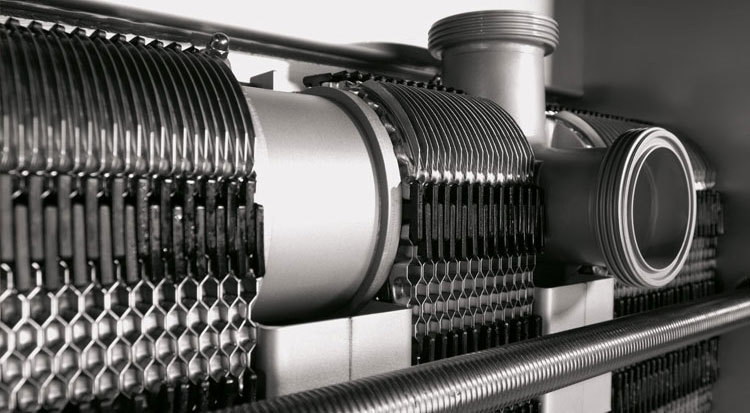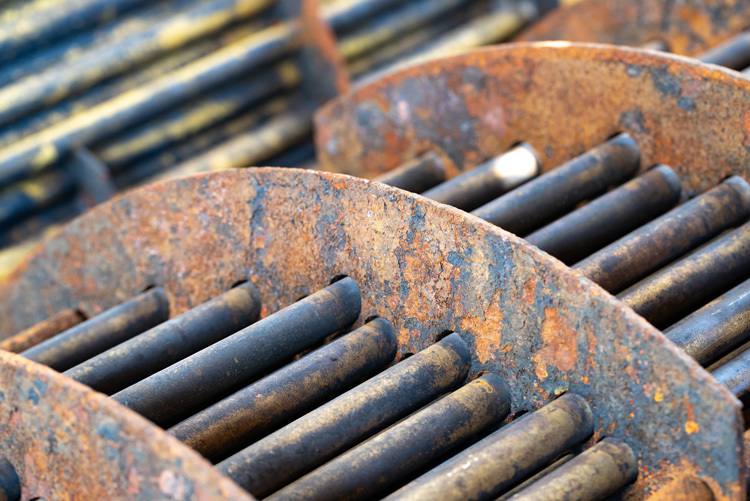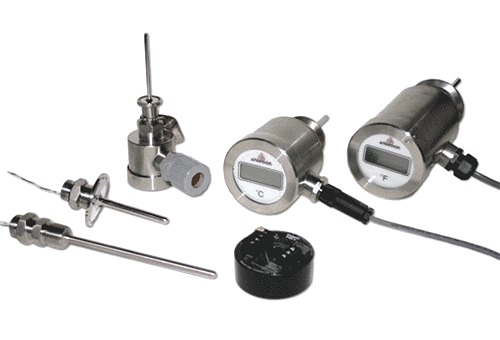在换热器中污染
Costs of fouling
用于热交换器的污垢预防通常聚焦在热交换器本身周围,然而,污垢和热交换器性能可能受到热交换器之前和之后的系统特性的影响。这些特性可以包括不同的产品性质,在热交换器之前的产品处理和其他设备的操作性能,例如泵,阀门和背压。
〜Melissa Fryer, Sanitary Heat Transfer Business Development Manager,Alfa Laval
简而言之,污垢的成本很多和各种各样。
- Production inefficiencies from pressure drops and poor heat transfer
- 拆除重型矿床的维护时间和设备
- 清洁ing equipment&化学品
- 危险清洁解决方案处理
- Reduced service life and added energy costs
- 停工中的生产损失
- 更换堵装设备
- 减少再生效率

污垢类型
卫生处理中最常见的污垢和老化落入四种主要类型:
- 结壳:在表面上积聚地壳或涂层的加工液,矿物质或清洁剂热交换器parts。
- Scaling:一种由碳酸钙,硫酸钙和硅酸盐引起的结合类型。
- 沉淀:来自腐蚀产品,金属氧化物,淤泥,氧化铝和硅藻(微藻)及其排泄物。
- Biological growth:生物污染的来源包括细菌,线虫和原生动物。
热交换器中污垢的原因
几个变量有助于结垢,包括水pH值,产物粘度和组分表面的粗糙度,包括许多其他。
Together, the variables can be expressed as a fouling factor that numerically represents resistance to heat transfer —或热阻— in your system.
关键污染因素
乳制品应用包括脂肪,糖和蛋白质,有助于结垢。在食物和beverageapplications, particulate matter can clump and clog, and in药物在加工过程中产生的应用,化妆品和药物颗粒可以粘附并积聚。为了帮助控制污垢,运营商注意四个关键处理因素:
- Fluid velocity
- Fluid temperature
- 流体化学
- 制造材料

Fluid velocity
在most cases,fouling decreases at higher fluid velocities because increasing flow velocity increases the fluid shear stress那which causes more removal of deposits.
对于更大量的沉积物,增加超出特定点的流速可能不会显着降低污垢。在非常强的沉积物的情况下,增加的流速可能没有任何效果。

Fluid temperature
Water can produce scaling from minerals such as calcium carbonate (CaCO3).Salts deposit on the heat exchanger surface increases with an increase in temperature.
类似地,在食品加工期间的温度升高,可以发生生物生长。最后,如果热产品出口和热内侧入口之间的温差过于显着,则食品中的蛋白质和脂肪可以燃烧。

流体化学
在牛奶加工过程中,磷酸钙和乳清蛋白可以在热交换器表面上积聚。The fouling causes pressure drop increases by reducing the area in which the product can flow. In dairy products generally, proteins, fats, sugars, and minerals can come out of solution and deposit on heat exchanger surfaces and foul channels.
如果在流体内发生化学变化,则差异可能导致管或板表面上的污垢层。For example, suspended salts may harden with an increase in temperature.

制造材料
To prevent corrosion fouling from layers of thermal-resistant material, select units fabricated with corrosion-resistant stainless steels and alloys. Plates, tubes, and entire heat exchanger units may be fabricated withAISI 304 or AISI 316L stainless steel。
对于更腐蚀性,高盐产品,部分单位可以用钛,不锈钢合金或Super Alloys™AL-6XN®和Hastelloy®C-22®。
如何检测热交换器中的污垢
污垢检测通常通过物理检查或通过监测系统性能来进行。
Physical inspection includes measuring the fouling's thickness on plates, pipes, or tubes.
- Heat transfer:由于污垢的绝缘性能,传热可能落在操作规格之外。
- 压力下降:热交换器入口和出口之间的压降增加可以指示由污垢沉积物引起的摩擦阻力或阻挡的流动路径。
Monitoring temperature and pressuresare the best way to troubleshoot and detect fouling in heat exchangers. Instruments measure and report critical variables that can indicate heat exchanger fouling.
换热器清洁
需要清洁保持换热器效率。清洁ing-In-Place (CIP)设备循环清洁化学品和冲洗,以冲洗热交换器的内部表面而不会拆卸它们。
清洁过程中流速的重要性
适当的流速确保了在清洁过程中流体的有效机械作用。一些制造商推荐换热器板块最低1英尺/秒的速度,但需求因制造商而异。

在清洁产品侧,流速应始终至少与生产的流速相同。
An increased flow rate may be required in some cases- 例如,在乳灭菌和粘性液体或含有颗粒的液体的加工中。
用目的使用清洁剂
水垢、缩放
清洁结壳或缩放是从板表面除去碳酸钙,硫酸钙或硅酸盐的过程。清洁剂必须与板金属和垫圈的组成相容。
在钛和不锈钢板中,永不使用盐酸。此外,在制备清洁溶液期间,切勿使用300ppm氯的水。在每种情况下,无法避免非钛设备的氯化,请咨询您的设备供应商。
去除沉积物
沉积物最常由金属氧化物,淤泥,氧化铝和硅藻生物及其排泄物组成。沉积物积累,因为热量在加工循环期间从流体中释放矿物和其他颗粒,并且在传热表面上沉降并沉积。
You should never use hydrochloric acid with stainless steel or titanium plates because the acid causes一般腐蚀,点蚀和应力腐蚀开裂。
去除生物生长
当使用热交换器增加加工食品的温度时,可以发生生物生物生物生物生长,如细菌,线虫和原生动物。Removing the growth requires the same attention to plate and gasket composition as incrustation.
制造商可以提供有关特定设备清洁和灭菌的更详细信息。
化学清洁基础知识
CIP运营商通常在化学品中遵循四个步骤cleaning process:
- Alkaline clean:消除有机材料的积累
- 冲洗:generally completed with a high-flow water flusher to remove loose debris and remaining residue from the alkaline step
- Acid cleaning:帮助更深入地溶解和软化污垢材料
- Final rinse
清洁解决方案的建议限制
- 5% by volume caustic at a maximum of 70°C
- 0.5%重量酸溶液,最大为70°C

The CIP process for plate and frame heat exchangers
The basic process for CIP是一个包括一个人的工作
- 将CIP单元连接到热交换器
- 混合和加热水和清洁化学品
- Alkaline mix:循环以消除有机材料的积聚
- 冲洗:通常用高流量的水冲洗器完成,以除去松散的碎片并从碱性步骤中剩余残留物
- Acid mix:循环以更深入地溶解和软化污垢材料
- Final rinse
- 排水热交换器
- 断开CIP单元

Shell and tube cleaning
壳管式热交换器在相对低的内部流体速度下操作,所以更容易污垢比污垢更容易受到污垢plate heat exchangers。To maintain efficient operation and higher transfer coefficients, keep the shell and tube heat transfer surfaces clean.
清洁化学品取决于板框架热交换器的相同变量,清洁化合物必须与热交换器的冶金相容。
在all cleaning processes, operators must use proper protective equipment, such as safety boots, safety gloves, and eye protection to avoid injury.
如何防止换热器中的污垢
减少污垢的最佳方法是通过利用适当尺寸的施加的热交换器来保持其在第一个位置,提供足够的速度,表面积和温度分裂。
〜Melissa Fryer, Sanitary Heat Transfer Business Development Manager,Alfa Laval
虽然污垢不是100%可预防,但几个步骤可以增加维护之间的间隔。实现污垢抵抗需要注意:
- 材料表面
- 恒定流量
- Backflushing
- 港口过滤

材料表面
Rougher surfaces increase fouling by collecting particles,所以选择由304,316或的热交换器或corrosion-resistant板材,管道和管。
建立制造商推荐的清洁方案,以防止粒子的过度堆积。

恒定流量
在传热表面上保持均匀和恒定的工艺流体流动通常通过防止颗粒粘附和积累来产生更少的污染。
悬浮在工艺流体中的颗粒倾向于沉积在低速区域中,特别是在速度快速变化的地方。

Backflushing
反冲采用阀门,其通过热交换器反转流体的流动,以在交换器入口处强制颗粒。

港口过滤
A port filter prevents particles from even entering the unit to reduce the amount of fouling.
Guide to Choosing the Right Heat Exchanger
本指南专为处理器,生产经理和机械工程师而设计,可以帮助热交换器选择过程。
下一步
As you've learned, fouling in heat exchangers can lead to heat transfer degradation, flow resistance, and pressure drops, which can make the proper selection for your process vital.我们在这里提供帮助!
更换零件,以保持当前单位的操作,直接更换磨损或低效的热交换器,或用于新工艺的新单元,今天联系CSI在417-831-1411。
我们的客户服务团队,工程师,设计师和产品专家提供通过广泛的品牌,技术和能力提供解决方案。
贡献作者

Melissa Fryer是Alfa Laval的食品传热团队的卫生热传递业务发展经理。梅丽莎收到了她的B.。纽约州纽约州立大学的化学工程学位,在食品,饮料和乳制品市场中的热交换器中指定,计算和故障排除了超过25年的经验。Melissa侧重于工程解决方案,以满足客户需求,并具有广泛的对该行业的知识和热情。
关于CSI.
Central States Industrial Equipment (CSI) is a leader in distribution of hygienic pipe, valves, fittings, pumps, heat exchangers, and MRO supplies for hygienic industrial processors, with four distribution facilities across the U.S. CSI also provides detail design and execution for hygienic process systems in the food, dairy, beverage, pharmaceutical, biotechnology, and personal care industries. Specializing in process piping, system start-ups, and cleaning systems, CSI leverages technology, intellectual property, and industry expertise to deliver solutions to processing problems. More information can be found atwww.xxshagua.com.。




